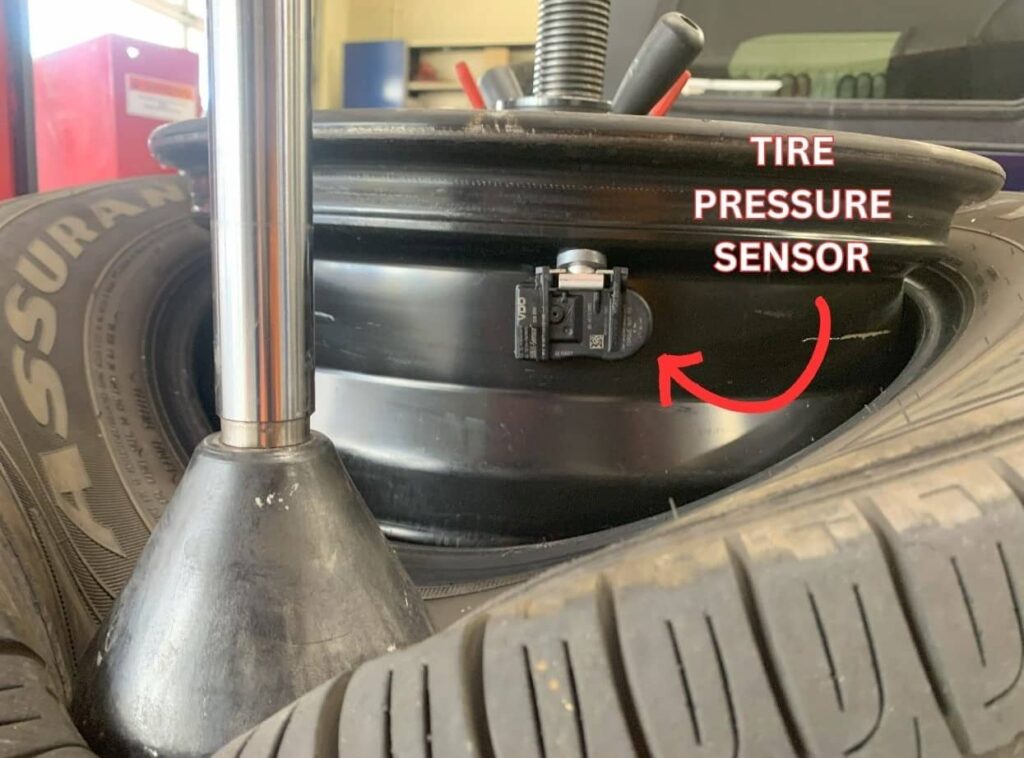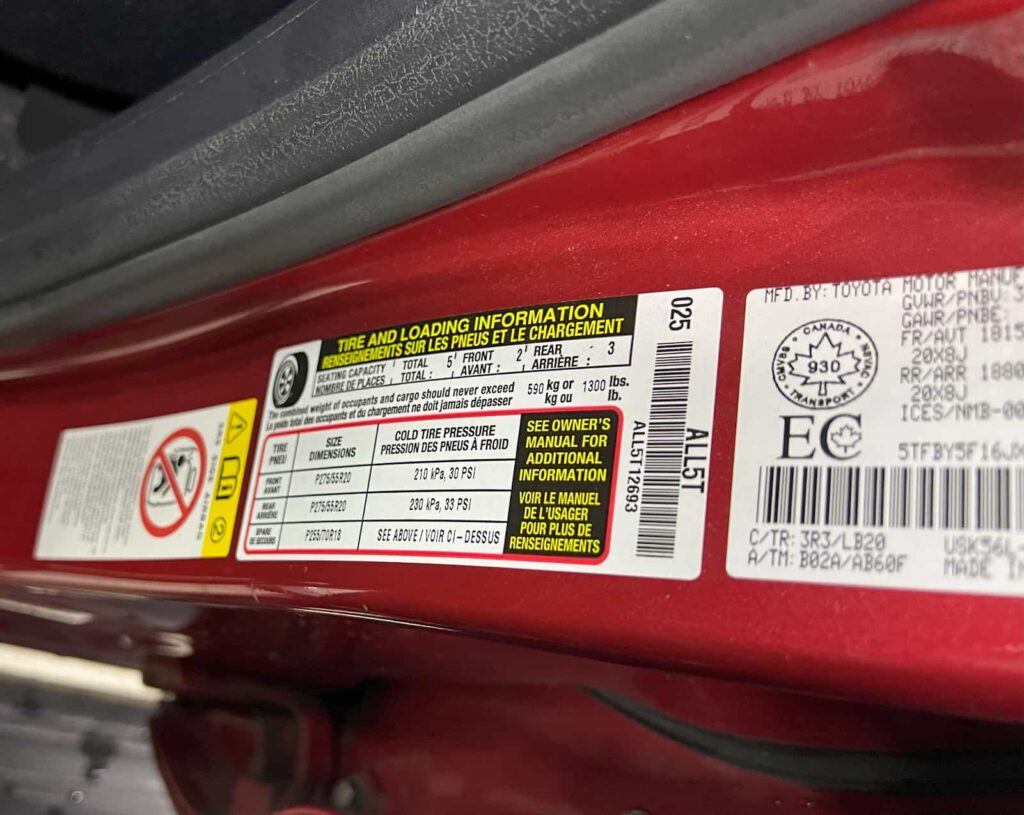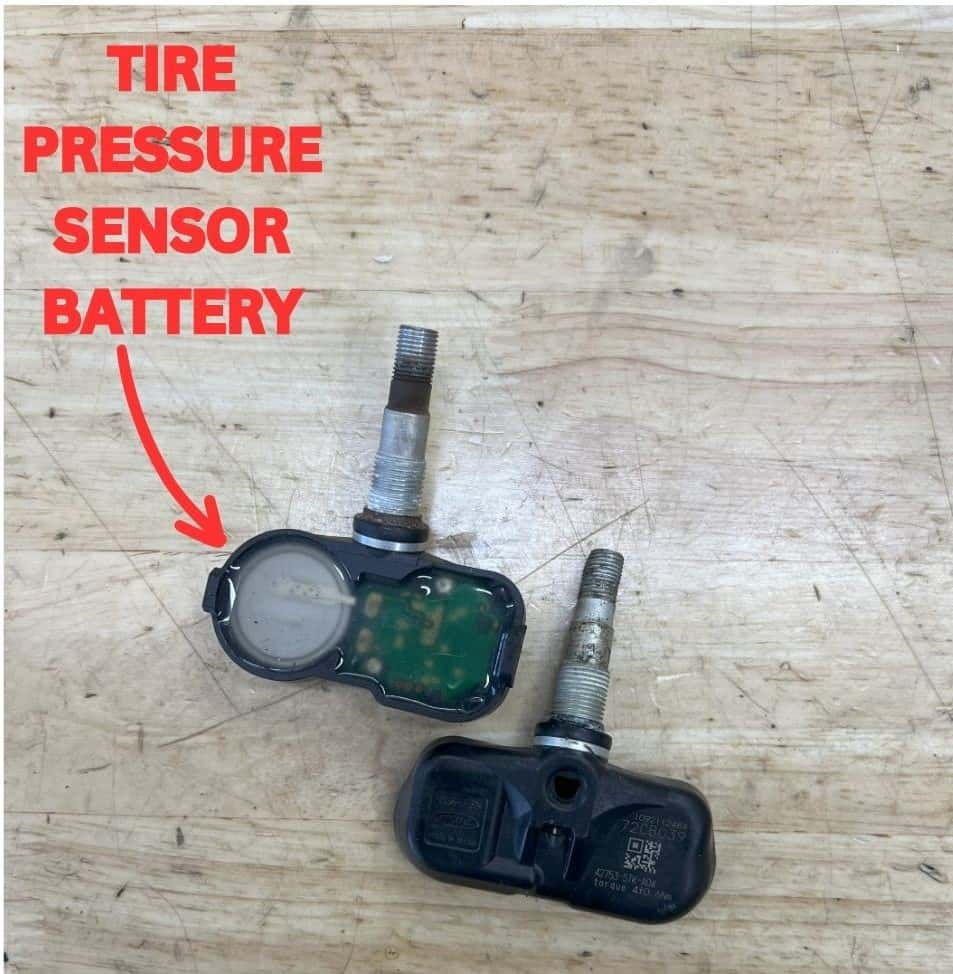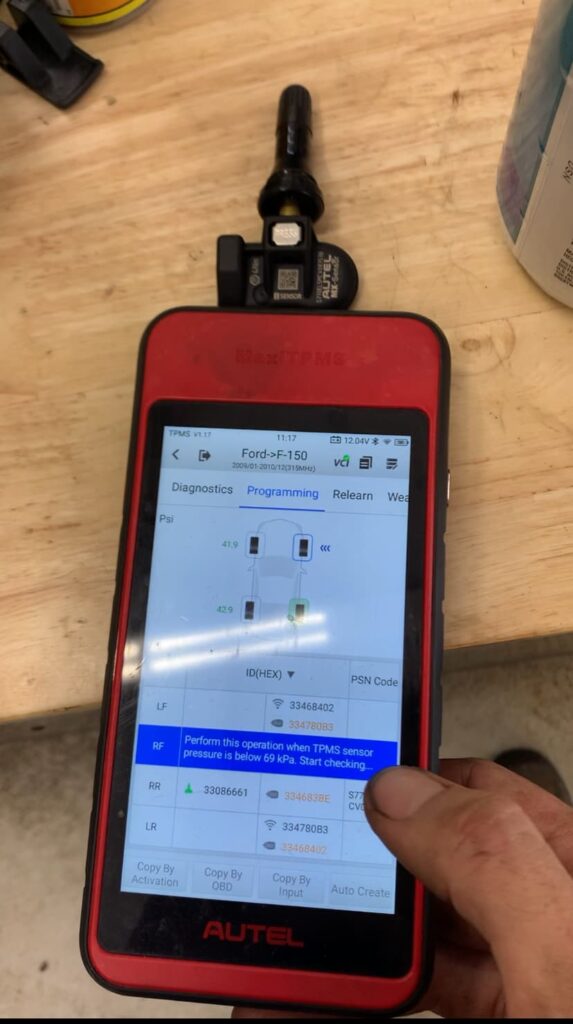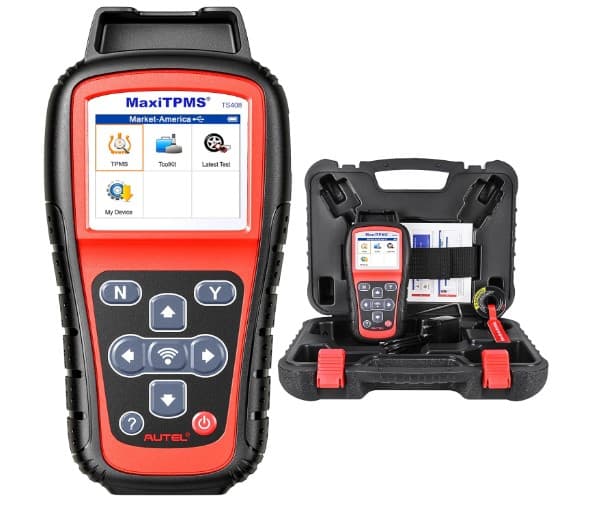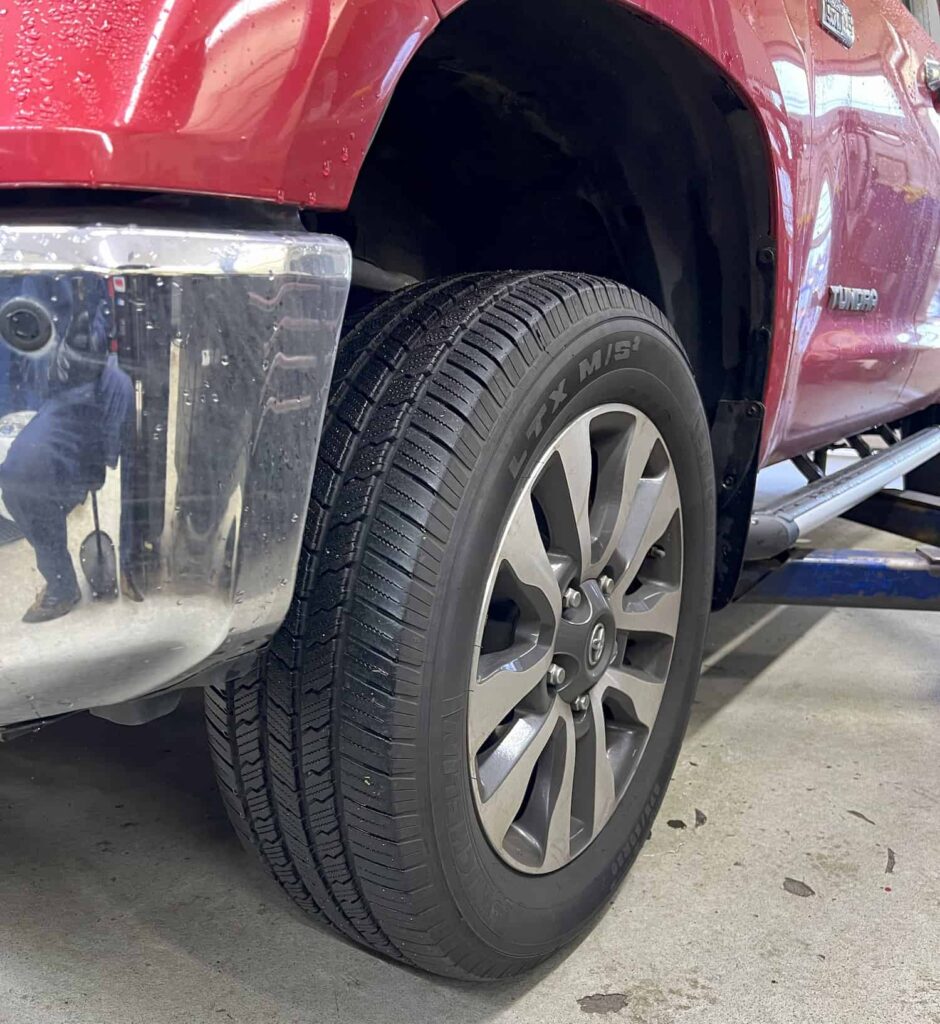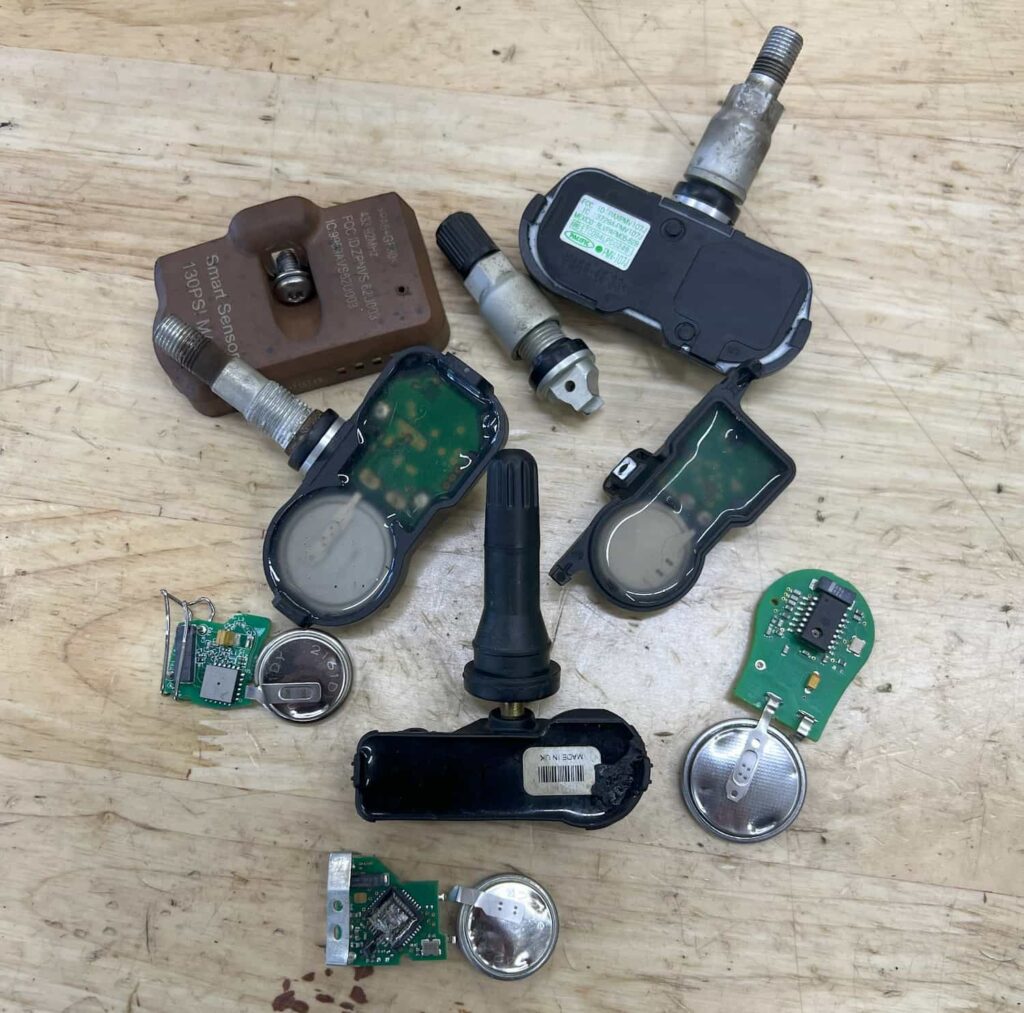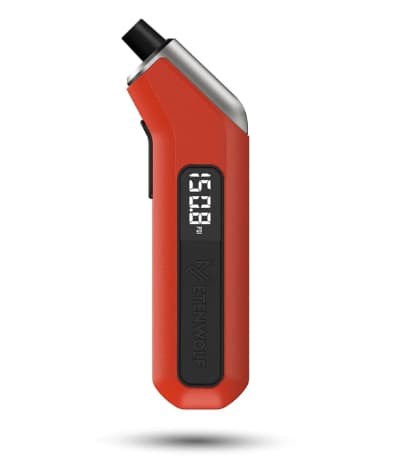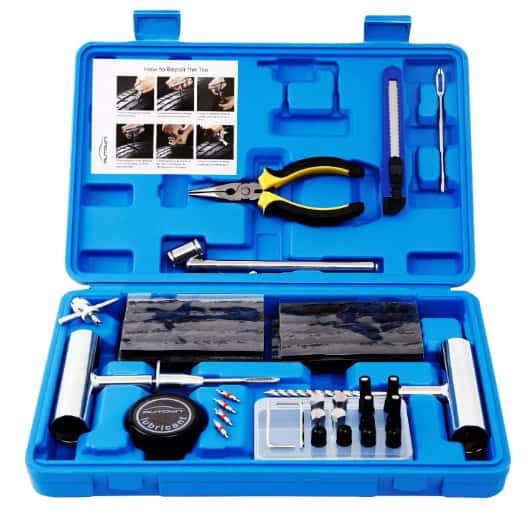STEPS TO RESET TOYOTA TUNDRA TIRE PRESSURE MONITORING SYSTEM
HOW TO RESET TOYOTA TUNDRA TIRE PRESSURE LIGHT (2007-2023)
Inflate all 4 Toyota Tundra air pressure to the recommended pressure levels.
Start the engine.
Firmly press and hold the Toyota Tundra TPMS reset button, located beneath the steering column, marked with “SET.”
Observe the Toyota low tire pressure indicator light flash on the dashboard 3 times and then turn off.
Let go of the Toyota Tundra’s TPMS “set” button after the tire pressure light stops flashing.
Drive your Toyota truck at speeds exceeding 24 Mph for 5-10 minutes.
HOW TO RESET TOYOTA TUNDRA TIRE PRESSURE LIGHT (2022-2025) INCLUDING NON-US VERSIONS
Check and inflate the air pressure in all 4 tires (check the spare) so they match the Toyota Tundra recommended air pressure values.
Start the engine.
Use the arrow buttons on the steering wheel to scroll through the information display screen menu options until you reach the Setting options.
Use the Down arrows on the steering wheel to scroll down and select VEHICLE SETTINGS by holding the OK button for 2-3 seconds.
Hold down the OK button with TPMS highlighted.
Select SET PRESSURE by holding down the OK button.
A confirmation message will read “Setting TPMS” on the Toyota Tundra information display screen.
WHAT TO DO IF THE TOYOTA TUNDRA TPMS RESET PROCEDURE DID NOT WORK?
In the event that pressing the Toyota Tundra TPMS reset button fails to extinguish the tire pressure warning light, turn off both the engine and the vehicle’s power supply before repeating the TPMS reset operation at least one more time. Sometimes it takes a few tries. Double check the air pressure and confirm that all doors and the hood are fully closed.
WHY DIDN'T THE TOYOTA TUNDRA TPMS RESET PROCEDURE WORK?
There are 4 main causes why the Toyota Tundra tire pressure reset process did not work:
The Toyota Tundra tire pressure may not reset correctly due to deflation or insufficient air in the tires. It’s essential to reassess the Toyota Tundra tire pressure in each tire. A drop in air pressure compared to previous checks suggests a puncture.
A decrease in functionality or depleted batteries in one or more tire pressure sensors will also cause issues. Utilizing a TPMS diagnostic tool is necessary to identify which sensor is malfunctioning.
The Toyota Tundra’s spare tire might be equipped with a tire pressure sensor that is currently low on air. Distinguishing between metal valve stems on regular tires and a rubber valve stem on the spare can indicate the absence of a tire sensor. However, if all valve stems are rubber (or all are metal), make sure the spare tire is properly inflated.
The tire pressure sensors are frozen. Sometimes the Toyota Tundra tire pressure sensors just stop working even with the battery in good health. Overinflate the tires with an extra 10 Psi and then slowly let the excess air out.
TOYOTA TUNDRA TIRE PRESSURE MONITORING SYSTEM EXPLAINED
The Toyota Tundra’s Tire Pressure Monitoring System (TPMS) plays a pivotal role in safeguarding and optimizing performance by ensuring the tires are always at the right pressure. Each tire is equipped with a pressure sensor, contributing to a total of four sensors, and these work in tandem with a specialized TPMS receiver module that’s connected to the Toyota Tundra’s on board computer system (ECU or ECM).
TOYOTA TUNDRA TPMS COMPONENTS AND HOW THEY WORK
TOYOTA TUNDRA TIRE PRESSURE SENSORS
Every Toyota Tundra tire is equipped with its own tire pressure sensor encased in a small plastic housing fixed to the valve stem. This unit contains a microcontroller, a power source (battery), a device for measuring pressure (pressure transducer), and an integrated transmitter with an antenna.
Pressure Transducer: This device transforms the measured tire pressure into an electrical signal.
Microcontroller: This unit interprets the electrical signal from the pressure transducer and reformats it into readable data.
Transmitter and Antenna: These components facilitate the wireless transmission of data to the Toyota Tundra’s TPMS receiver module.
In essence, the microcontroller, a compact chip energized by a battery, gauges the air pressure within the tire. Following this, the transmitter forwards the data to the Tundra’s TPMS receiver module via radio frequency at either 315 mHz or 433 mHz.
TOYOTA TUNDRA TPMS RECEIVER MODULE
The TPMS receiver module is crucial within the system, as it collects the air pressure data from the Toyota Tundra tire sensors and subsequently forwards this information to the onboard computer of the Toyota Tundra,
Signal Acquisition from Tire Sensors: The Toyota Tundra TPMS receiver module is strategically placed within the vehicle, usually beneath the dashboard or close to the center console. While the Toyota moves, its tire sensors send out data, which the receiver module captures to maintain constant monitoring.
Data Analysis and Synchronization: Upon receiving a signal, the TPMS receiver module analyzes the data. This step includes interpreting the signal to gather tire pressure details and determining the specific tire associated with the data.
TOYOTA TUNDRA ON BOARD COMPUTER
The Toyota Tundra on board computer (ECU) plays a critical role in analyzing tire pressure information. It obtains this information from the receiver module and assesses it in light of Toyota’s established air pressure benchmarks. If the ECU detects a pressure level in any tire that significantly strays from these benchmarks, it triggers a low tire pressure warning. This warning is usually showcased on the vehicle’s dashboard as either a specific tire pressure reading, an indicator light for low pressure, or a notification on the display screen. Additionally, the ECU is also responsible for presenting the current tire pressure readings on the information display screen of the Toyota Tundra.
2007-2023 TOYOTA TUNDRA TIRE PRESSURE AND SIZE
TIRE SIZE | Front Psi/Bar | Rear Psi/Bar |
275/55R20 | 30/2.0 | 33/2.2 |
255/70R18 | 30/2.0 | 33/2.2 |
275/65R18 | 30/2.0 | 33/2.2 |
WHAT TO DO FIRST IF YOUR TOYOTA TUNDRA TIRE LIGHT TURNS ON
When the Toyota Tundra low tire pressure light activates, immediately find a safe location to stop and use a digital tire pressure gauge to verify the pressure in your tires. Conduct a visual examination of each tire and wheel for potential issues. If the low tire pressure indicator turns off by itself after you adjust the air pressure in your tires to the appropriate Psi, it signifies that the Toyota Tundra tire pressure monitoring system is functioning correctly.
WHY IS THE TOYOTA TUNDRA LOW TIRE PRESSURE LIGHT ON?
Incorrect Tire Pressure: The warning light can be activated by both too much and too little pressure.
Spare Tire: Driving with the spare tire.
TPMS Sensor Battery Failures: Tire sensor batteries that are either worn out or not functioning properly.
Issues with the TPMS Receiver or Vehicle Computer: Problems either in the hardware or software of the receiver module or the on board computer.
Electromagnetic Disturbances: Disruptions caused by electronic devices such as radios, mobile phones, and security systems.
Dramatic Changes in Air Temperature: Temperature variations of 10 degrees or more that influence tire pressure.
Vehicle Overload: Loading the vehicle beyond its maximum capacity or towing more than it’s rated for.
Application of Tire Chains: The use of chains that may affect the pressure measurements.
Excessive Window Tinting: Window tints that are too dark potentially disrupting the signal between receiver module and the tire sensors.
Variations in Road Temperature: Changes in the temperature of the road surface.
Incompatible Tire Size or Type: Tires that do not conform to the specifications of the Toyota Tundra.
Damage to TPMS Sensor or Valve: Damage occurring from tire services or maintenance.
Not Recalibrating TPMS After Service: Neglecting to reset the Toyota Tundra TPMS after performing maintenance such as tire rotations.
Tire Deflation or Leaks: Loss of air pressure due to punctures or leaks.
Damage to Tires or Wheels: Damage resulting from encounters with road debris or general wear.
WHAT IS COLD TIRE PRESSURE?
To ensure precise tire pressure settings, it is critical to gauge and adjust the air pressure in tires when they are cold, in alignment with the manufacturer’s recommendations. Tire pressure can vary by about 1-2 psi with each 10°F shift in temperature and increase by 4-5 psi when the tires heat up during driving, which can lead to inaccurate readings. The most reliable measurements come from tires that are cold, meaning they have either not been driven recently or have been at rest for a minimum of 3 hours.
TOYOTA TUNDRA TIRE PRESSURE SENSOR BATTERY LIFE
Each Toyota Tundra tire pressure sensor is powered by a built-in silver oxide battery, which cannot be replaced or recharged. The lifespan of these batteries ranges from 5 to 15 years, or they can last for approximately 100,000 to 150,000 miles. Once a sensor’s battery depletes, the entire sensor unit must be replaced with a new one. Assessing the status of your Toyota Tundra tire pressure sensor battery necessitates the use of a TPMS diagnostic device.
HOW DO SPECIAL TPMS TOOLS WORK?
TPMS diagnostic tools are sophisticated instruments crafted to interface with the TPMS sensors within a vehicle. They operate by dispatching a radio frequency (RF) signal towards the sensor, which in turn, sends back information such as tire pressure, temperature, battery condition, signal strength, and the sensor’s identification number. This information is then captured and displayed by the diagnostic tool, enabling service professionals to assess the operational status and overall health of each TPMS sensor. These diagnostic tools are essential for identifying problems such as sensor failures or depleted batteries. Additionally, more advanced models of these tools have capabilities for reprogramming sensors, updating their firmware, or facilitating a relearning procedure that allows the vehicle’s computer system to recognize new sensors.
USING TPMS DIAGNOSTIC TOOLS
Upon reviewing the data supplied by the TPMS diagnostic tool, any sensor indicating insufficient battery power or relaying inaccurate data (for example, showing 0 psi while the actual tire pressure is 32 psi) necessitates the replacement of the tire pressure sensor. The new sensor must then be programmed to sync with the Toyota Tundra’s ECU.
WHY ARE ALL TPMS SENSORS FINE BUT THE TIRE LIGHT IS ON?
Should the Toyota Tundra tire pressure sensors function correctly yet the low tire pressure indicator remains illuminated:
Inflate each tire to approximately 40-45 Psi, exceeding the normal pressure by about 10 Psi.
Gradually let out air from each tire until the pressure reaches roughly 35 Psi.
Execute the Toyota Tundra tire pressure reset procedure.
Drive the Toyota Tundra for around 10 minutes.
Deflate the tires to remove the surplus air pressure.
IS IT SAFE TO DRIVE THE TOYOTA TUNDRA WITH THE LOW TIRE WARNING LIGHT ON?
No, driving your Toyota Tundra with underinflated or overinflated tires poses a safety risk. Promptly fixing or changing a tire that is leaking air is essential. However, if a sensor has low battery causing the low tire pressure warning, driving remains safe provided that the tire pressures are within the recommended levels.
HOW FAR CAN YOU DRIVE THE TOYOTA TUNDRA WHEN THE TIRE LIGHT IS ON?
Upon the activation of the Toyota Tundra low tire pressure warning, there isn’t a definitive mileage or duration deemed safe for continued driving. It’s imperative to halt at the earliest convenience, conduct a visual inspection of all tires, and individually verify the tire pressures using a digital gauge. Relying solely on the tire pressure data provided by the Tundra’s built-in information system is discouraged.
HOW TO HANDLE TOYOTA TUNDRA TIRE PRESSURE SENSORS WHEN CHANGING WHEELS OR TIRES
If you’re considering changing the wheels or rims on your Toyota Tundra, you have several choices:
Transfer the current Toyota Tundra tire pressure sensors from the old wheels to the new set.
Choose programmable tire pressure sensors (such as Autel programmable sensors), fit them onto the new wheels, and program and relearn them with your Toyota Tundra on-board computer. This approach necessitates a TPMS programming tool.
Adhere to the conventional method for resetting the Toyota tire pressure warning light when replacing tires on the Toyota Tundra.
WHY IS THE TOYOTA TUNDRA LOW TIRE LIGHT FLASHING?
If your Toyota Tundra low tire light is blinking, it indicates an interruption in the communication link between the vehicle’s on-board computer and one or more of the tire pressure sensors, recognized as a TPMS malfunction. This issue usually arises from one of three main reasons:
Utilization of the vehicle’s spare tire, which lacks a TPMS sensor.
The battery within a tire pressure sensor is either fully drained or close to depletion.
A tire pressure sensor is malfunctioning or damaged, leading to failed communication with the Toyota’s TPMS.
WILL THE WEATHER TRIGGER THE TOYOTA TUNDRA LOW TIRE PRESSURE WARNING?
The activation of the Toyota Tundra low tire pressure warning is frequently observed with shifts in weather conditions. Tire pressure can fluctuate approximately by 1 Psi with every 10°F change in ambient temperature. As an illustration, a drop of 43°F in temperature over a month could result in a decrease in tire pressure from 32 Psi to 27 Psi in your Toyota Tundra, triggering the low tire pressure alert.
WHY IS THE TOYOTA TUNDRA TIRE LIGHT ON WHEN THE TIRES SEEM OKAY?
Do not rely exclusively on visual inspections to evaluate the condition of your tires. It is important to check the Toyota Tundra’s air pressures with a digital tire pressure gauge, especially if there’s a suspected problem. If the low tire pressure warning light shuts off following tire inflation, this serves as evidence that the Toyota Tundra Tire Pressure Monitoring System (TPMS) is functioning properly.
FIND A LEAKING TIRE USING SOAP, WATER, & A SPRAY BOTTLE
For precise detection of a tire leak, follow these steps:
Pump the suspect tire up to about 45 Psi.
Mix water and soap in a spray bottle to create a soapy solution.
Spray the soapy water liberally all over the tire, focusing also on the bead and valve stem regions.
Watch for bubbles to appear and trace them back to find the precise location of the leak.
Use chalk to mark the area where the leak is located.
STEPS TO RESET toyota TUNDRA TPMS BY DISCONNECTING THE BATTERY
Should the Toyota Tundra low tire pressure light persist even after attempting a reset and adjusting the tire pressure, it may be necessary to disconnect the vehicle’s main 12-volt battery to erase any TPMS-related errors stored in the on board computer. Follow these steps:
Ensure the engine and all electrical devices (such as the radio and lights) are turned off.
Remove the negative battery terminal clamp.
Wait for a short period before reconnecting the terminal, making sure it’s tightly secured.
This procedure will reset and turn off the low tire pressure indicator. However, if the warning reactivates while driving, it may indicate an issue with an air pressure sensor or a tire that is slowly leaking air.
DOES TIRE AIR PRESSURE IMPACT FUEL Efficiency?
Keeping your Toyota Tundra’s tires inflated to the manufacturer’s suggested pressure levels is crucial for maximizing fuel efficiency. Tires that are not adequately inflated create more rolling resistance, which in turn forces the engine to expend more energy and consume additional fuel. A reduction of 10 psi in tire pressure can cause a fuel efficiency decrease of about 2%. While this percentage may appear minimal, over an extended period, it can lead to noticeable increases in fuel expenditure.
FAQ
CAN THE TOYOTA TUNDRA TPMS BE DISABLED?
No. The Toyota Tundra’s tire pressure monitoring system (TPMS) is designed to be always active and cannot be turned off or disabled. If the Toyota Tundra’s tire pressure sensors are removed and substituted with valve stems without sensors, the tire pressure warning light will initially flash and then stay on continuously. This scenario is recognized as a fault within the Tire Pressure Monitoring System.
IS THE LOW TIRE PRESSURE WARNING TRIGGERED BY CHANGES IN ALTITUDE?
No. Taking your Toyota Tundra to elevated altitudes generally won’t activate the tire pressure warning light. As you ascend, the pressure inside the tires tends to increase, with an anticipated gain of approximately 0.5 Psi for each 1,000 feet climbed.
ARE TIRE PLUGS SAFER THEN TIRE PATCHES?
With a decade of experience as an automotive technician, I frequently resort to using tire plugs for fixing punctures and have consistently deemed them safe and efficient if applied properly. Nonetheless, it’s important to avoid using tire plugs on tires that show significant tread wear or on if the puncture is on the sidewall. For more substantial punctures or leaks, opting for a tire patch or a complete tire replacement is advisable.
PRO TIP: Invest in premium quality tire plugs. Inferior quality plugs are short-lived and should be avoided.
WILL USING TIRE SEALANTS BREAK TPMS SENSORS?
Yes, applying tire sealants may harm tire pressure sensors in the Toyota Tundra. Opting for a sealant as a temporary solution should be followed by a trip to a nearby service center to ensure the tire is thoroughly cleaned and the tire pressure sensors are evaluated for functionality.
ABOUT THE AUTHOR
STEFAN A.
Professional Automotive Technician – I am currently an automotive technician in New Jersey and have worked in private shops as well as dealerships for the past 10 years. When I am not writing articles I am wrenching on race cars and driving radio controlled cars at the track!
Everything in this article is applicable to all Toyota Tundra models and versions built between 2007-2025.
Please note that this blog post contains Amazon affiliate links. This means that if you make a purchase through one of these links, we at TPMSRESET.COM may earn a small commission at no extra cost to you. We only recommend products that we personally use and believe in. Thank you for supporting us.


